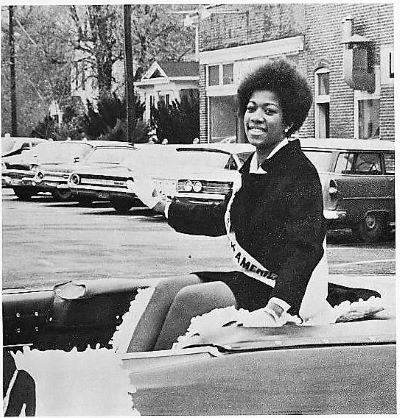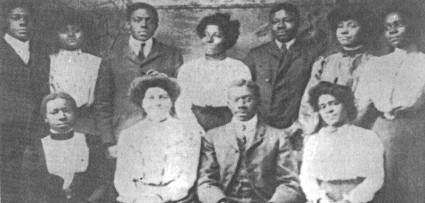
Historical research is like looking through a relative’s attic. It often turns up interesting and unexpected facts and anecdotes about people, places and things. Here are tidbits from the University of Maryland Eastern Shore first 125 years.
Junior Saundra Williams made history Sept. 8, 1968 when she was named the first Black Miss America. The event was organized to protest “the white stereotype” of the Miss America Pageant held that same weekend blocks away in Atlantic City, N.J.
The New York Times published side-by-side articles about the pageant winners on page 54 of its Sept. 9 edition. Williams’ hometown newspaper, the Philadelphia Inquirer, published a front-page article that same day about her achievement.
Williams received a Bachelor of Arts degree in social sciences May 31, 1970, the last time her alma mater awarded diplomas bearing the name Maryland State College.
* * *
1957 marked the 70th anniversary of the institution as well as the 10th anniversary of the presidency of John Taylor Williams. In appreciation, the staff presented the president and his wife, Jennie V., with a 21-inch General Electric television set. He served 23 years, from 1947 until 1970.
* * *
Williams loved to entertain after football games and liked to tell people he would barbecue “anything that [would] hold still.” His specialty was Oklahoma open-pit pork ribs. An Oct. 10, 1959 Afro American newspaper article described Williams’ culinary acumen under the colorful headline: “Meet a College President Who Can Cook Barbecue.” His recipe is still used occasionally by the university’s catering service at campus events organized to feed large groups of people.

On Armistice Day, Nov. 11, 1941 — 26 days before the Japanese attack on Pearl Harbor — the Princess Anne Academy choir had its first radio performance under the direction of education professor T. Waldo Kiah at WBOC in Salisbury, Md.[1]
* * *
Students paid $199 to study at the Academy during the 1930-31 school year. High-heel shoes were prohibited and “extravagance of dress, jewelry and hats were discouraged.” Use of tobacco or intoxicants was forbidden. Students were required to bring a Bible to school with them.[2] Sports offered were football, basketball, track, volleyball and tennis.
* * *
According to the 1913-14 Morgan College catalogue, no tuition was charged Maryland residents who attended its branch campus in Princess Anne, but students were assessed fees for books and athletics. The book deposit was $2 per year, and the entrance fee was $1 per year.[3] Boys wore military-style uniforms: cap, trousers and coat, while girls wore dresses.[4] There was daily chapel and Sunday services. Monthly room rent was $2.75 and meals were $7 per month.[5] The campus was 117 acres.
* * *
The first class (pictured below) to complete a four-year, “normal course” of study – secondary education — did so in 1904.

Standing: Harold Richardson, Annie Coard, Greenbury Howard, Julia Stevenson
William Hayman, Blanche Howard and Anna Handy
* * *
In 1903, the institution offered night school instruction to boost attendance. The program was soon phased out because of low participation.
[1] College Mirror, Vol. 1, No 2, February 1942
[2] 1930-31 Princess Anne Academy course catalog.
[3] 1913-14 Morgan College catalog
[4] Id.
[5] Id.

